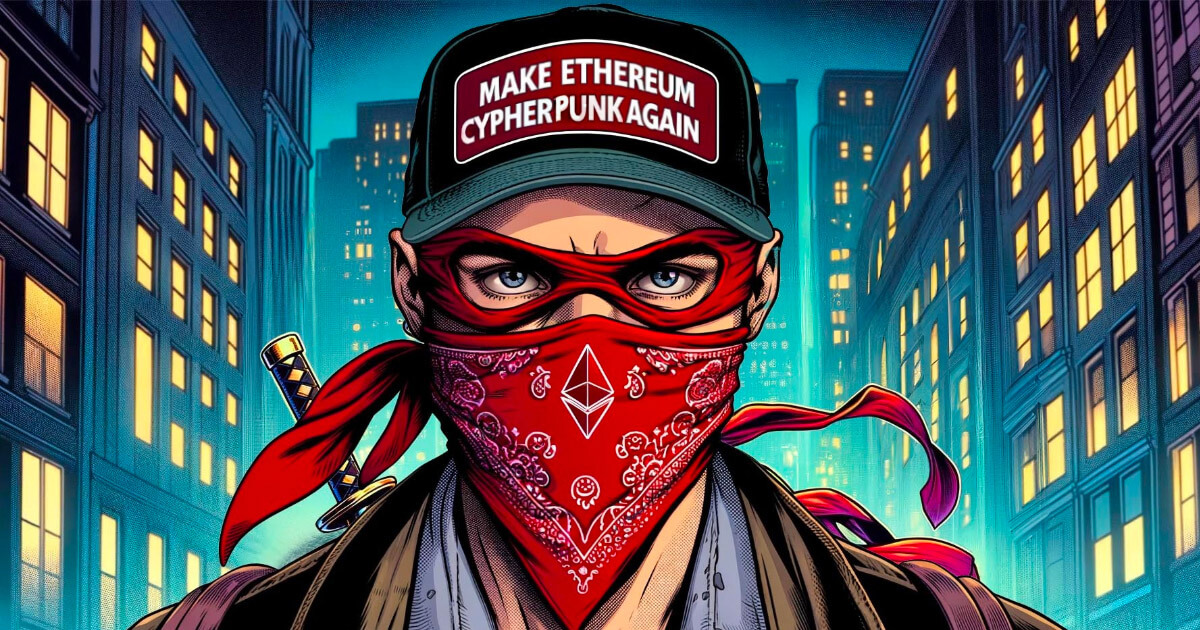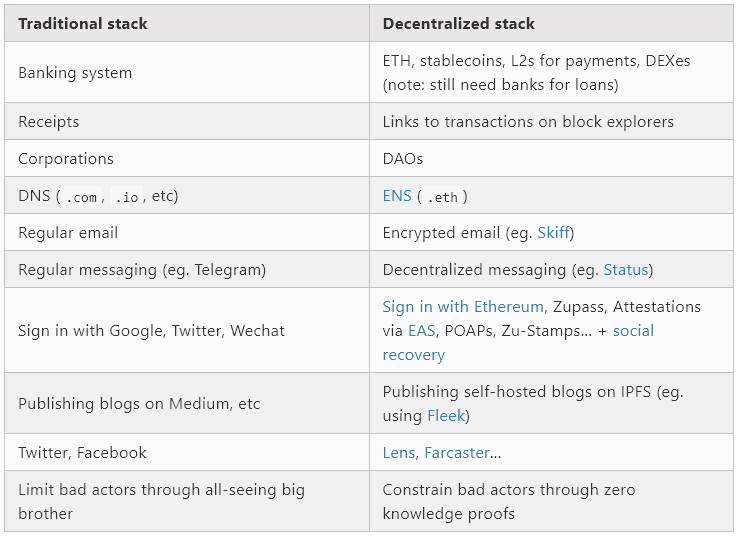Vitalik wants Ethereum to become a ‘cypherpunk’, welcoming a social layer as its core USP.

Ethereum co-founder Vitalik Buterin shared his insights on the evolving landscape of the cryptocurrency ecosystem on December 29, mainly on “Make Ethereum Cypherpunk Again.” In a blog post titled , we focused on Ethereum’s role in shaping a more open and decentralized internet.
From its inception, Ethereum has evolved beyond being a simple extension of Bitcoin through smart contracts. Buterin recalled his earliest memories of using Bitcoin at Berlin’s Bitcoin Kiez and the libertarian gathering PorcFest, emphasizing that the technical and social aspects of the cryptocurrency world are intertwined. These experiences highlight the broader vision of cryptocurrencies: fostering a free and open society where technological, social, and economic factors interact harmoniously.
The initial concept of “web3,” created by Ethereum co-founder Gavin Wood, envisioned Ethereum as a fundamental building block of a more open internet stack. This vision aimed to overcome the limitations of the free and open source software movement of the 1980s and 90s, which failed to take into account the collaborative and centralized nature of modern Internet applications. Ethereum was seen as a decentralized shared hard drive, along with technologies such as peer-to-peer messaging and decentralized file storage, as critical to extending the open source ethos into today’s interconnected world. For Buterin, the chart below outlines the key benefits of distributed technology.

But Buterin notes that the focus has shifted since around 2017, with less emphasis on consumer cryptocurrency payments and non-financial applications. This change is partly due to rising transaction fees on the Ethereum network. This has resulted in pricing of more trivial, non-financial uses in favor of financial applications where speculative activity dominates. According to Buterin, these changes led to a mismatch between Ethereum’s original vision and the broader cryptocurrency space.
Looking ahead to 2024, Buterin highlights several positive developments in Ethereum technology that could return the platform to its fundamental principles. This includes advances in rollups, second-generation privacy solutions, account abstraction, light clients, and zero-knowledge proofs. These technologies solve scalability challenges and embody the values of decentralization, censorship resistance, and public participation.
Buterin says that as part of its broader technology vision, Ethereum continues to develop its original components and “sister technologies” such as decentralized messaging and decentralized storage. Introducing zero-knowledge proofs adds a new dimension, enabling both privacy and authentication. For example, Buterin mentions how Zupass, a zero-knowledge proof-based system, successfully implemented anonymous voting, demonstrating the potential of Ethereum-based technology to achieve privacy without sacrificing security.
“At least on a purely technical level, we can see the outlines of what a cypherpunk world like Ethereum could look like.
We can hold assets in ETH and ERC20 tokens as well as all kinds of NFTs, and we use a privacy protection system based on stealth address and privacy pool technology to protect your privacy while protecting your privacy from known malicious actors. It can block your ability to profit. From the same anonymity set.”
Buterin also highlights Ethereum’s role in developing a decentralized technology protocol stack that competes with traditional centralized systems. This stack includes banking, social media, and identity verification alternatives, and highlights Ethereum’s commitment to building tools that interoperate with the broader ecosystem rather than creating isolated empires.
According to Buterin, Ethereum’s social hierarchy is equally important. He acknowledges that there needs to be a balance between incentive-driven and community-driven approaches. Large-scale public goods financing and collaborative efforts within the Ethereum ecosystem are steps toward this balance, but there is plenty of room for growth and improvement.
“There is a unique combination of valuing a warm and cohesive community, while also remembering that what feels “warm and cohesive” on the inside can easily feel “oppressive and exclusive” on the outside, and valuing strict neutral norms. . Open source and censorship resistance are ways to avoid the risk of going too far with community focus.”
Ultimately, Buterin envisions Ethereum as a platform that excels technologically and economically and fosters a strong, values-driven community. Buterin closed his post by saying:
“If we can make this combination work well, we will be in the best position to realize our vision on an economic and technological level.”
Buterin believes that integrating technological innovation with social and ethical principles could potentially enable Ethereum to realize its original vision of a decentralized, open, and equitable digital world.



